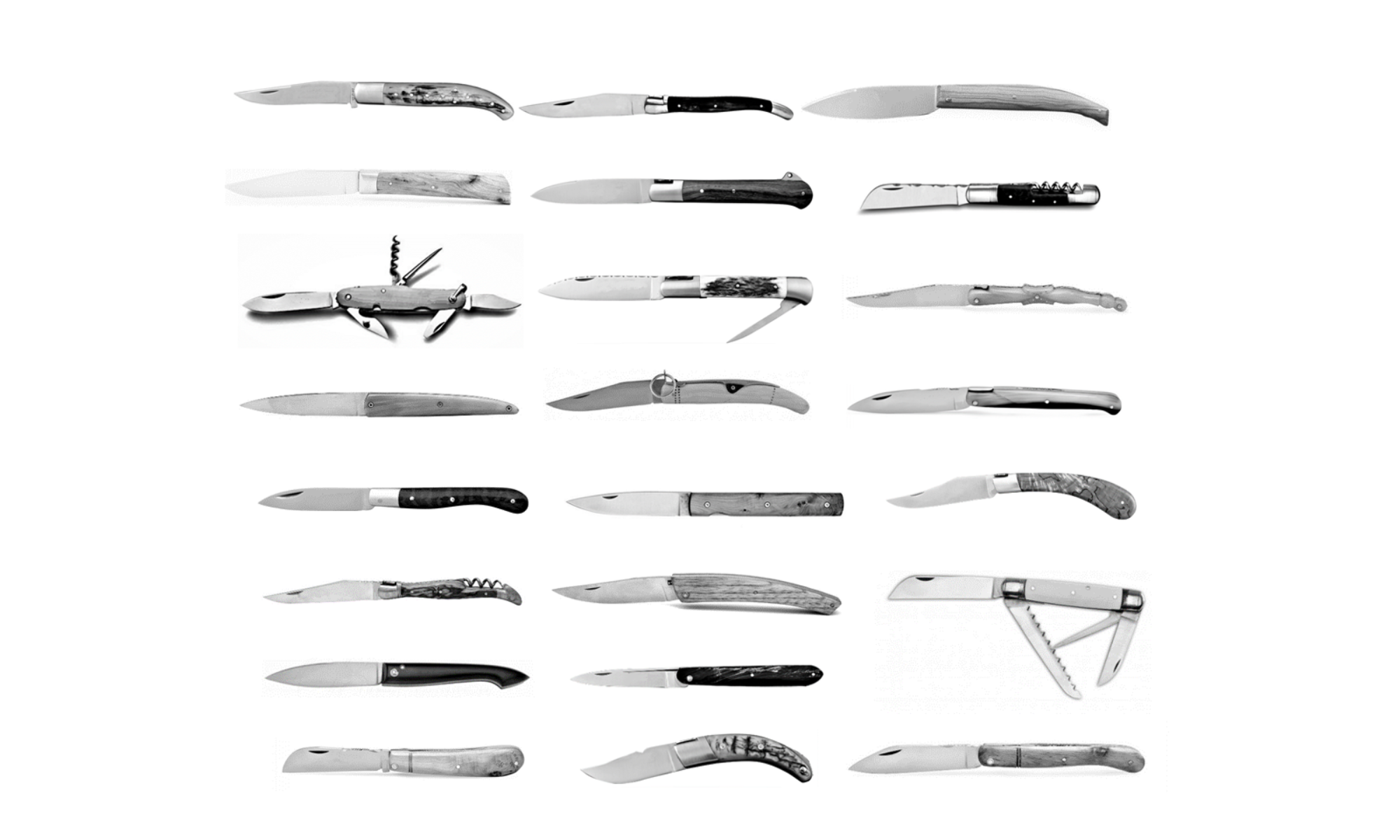
The “palm” ratchet-lock folding knife gets its name from the locking system on the back of the handle that has the shape of a palm leave (palme in French).


The system is actually inspired from the Spanish Navaja that gained, in the late 18th century, a locking style blade with a back spring and a metal pull ring to release the lock. These knives were called Navaja de Muelles (Spring Knifes). The ring was eventually discarded in favor of a lever, still present in today’s navajas.
This made that, until early in the 20th Century, the palm knives were sometimes called navaja in France. Those Spanish navajas were considered fighting knives, sometimes even prohibited, it is important to recall that for the rest of our story.


The knife is in fact quite different from a navaja. It is a plain handle, in wood or horn, almost like a Capucin, with an external spring covering the back of the handle, including the ratchet-lock.



It is a simple, easy to produce, yet efficient locking system. The blade is often in a yatagan style.


At the beginning of the 20th Century, this type of knife was popular, considered as a hunting knife, but in the pocket of many workers and farmers.



When WW1 broke out in Europe, it completely changed the classic warfare and the trench battle style called for different tactics and equipment. Storming the enemy trench with a long rifle fitted with a long bayonet was not always convenient and feedback from the front line requested a knife for hand-to-hand combat.
The soldier equipment did not include a knife and the war ministry sent delegates to manufactures, mainly in Thiers, to find a suitable equipment.
The palm knife was selected, all the stocks were requisitioned and large orders placed. So much that even the cutleries from Nontron, specialized in ferrule (ring lock) knives, started to produce palm knives.
In September 1915, more than 46,000 of those locking knives have been delivered.


However, and despite its fierce reputation in the navaja form as fighting knife, it was not adapted to the trench combat. The blade was a bit thin and the single pin to fix it made the ensemble too weak. Moreover, the handle was sleek and the knife did not have a cross-guard, making the thrust hits dangerous, especially with a handle covered in mud or blood.

Eventually, the Army ordered simple butcher knives…

Before developing specific designs.

The type was still popular until the mid 20th Century, before being replaced by lockbacks, liner-locks etc.



However, among others, the Nontron cutlery is still producing a knife remnant of those made by its ancestors, quite different from its traditional product line.

Mongin, with its fabulous knives, is faithful to that system, in the Nogent tradition, even removing the ratchet lock to make it like a classic slip joint.


Despite the poor capabilities as a fighting knife, they remain nice and great utility knives with a genuine long history


















